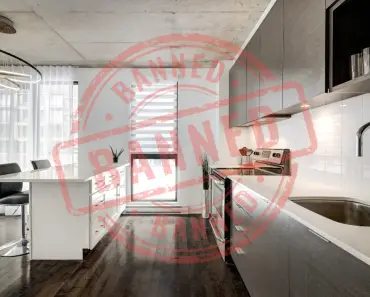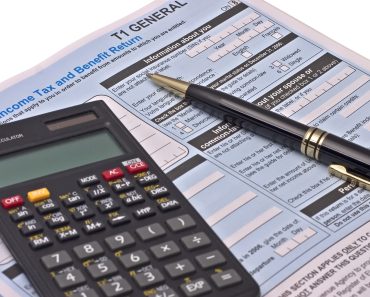 Canada’s growing household debt is causing concern. To address this, the Office of the Superintendent of Financial Institutions (OSFI) has introduced new guidelines. This article breaks down what these changes mean for homeowners and the overall housing market. It’s a crucial time for homeowners to understand and adapt to these shifts.
Canada’s growing household debt is causing concern. To address this, the Office of the Superintendent of Financial Institutions (OSFI) has introduced new guidelines. This article breaks down what these changes mean for homeowners and the overall housing market. It’s a crucial time for homeowners to understand and adapt to these shifts.
Focus on Combined Loan Plans (CLPs)
Combined Loan Plans, commonly known as CLPs or re-advanceable mortgages, have become a popular choice for many homeowners in Canada. These plans neatly bundle a regular mortgage with a home equity line of credit (HELOC). The system works in a way that, as homeowners pay down their mortgage, an equivalent sum becomes available in their line of credit. Currently, this mechanism allows homeowners to leverage up to an 80% loan-to-value ratio. In simple terms, this means the more you pay off your mortgage, the more credit becomes available to you, up to a certain limit. This flexibility has made CLPs an attractive option for many, but with new guidelines on the horizon, the landscape is set to change.
Impending Changes
Recent concerns about household debt have prompted action, and as a result, significant changes are coming to how CLPs function. The primary shift is in the re-advancing credit limit. While homeowners are currently able to maintain a loan-to-value ratio of up to 80%, banks will soon be adjusting this limit down to 65%. This means that as you pay down your mortgage, the credit available in the corresponding HELOC will be reduced. The timing of this change will depend on individual banks, but most homeowners should expect to see adjustments either by the end of October or December. This move aims to ensure both borrowers and lenders are safeguarded against potential financial risks, but it’s essential for homeowners to be aware and prepared for the impact on their borrowing power.
The Appeal of HELOCs
Home Equity Lines of Credit, or HELOCs, have gained considerable traction among homeowners, and for good reason. One of their primary attractions has been the ability to tap into home equity, essentially turning a portion of their property’s value into a flexible, accessible fund. During the early days of the pandemic, when interest rates were at a low and real estate prices saw a surge, the appeal of HELOCs grew even stronger. They served as a lifeline for many, offering a relatively inexpensive way to cover unexpected expenses, be it from sudden job losses, urgent home repairs, or unforeseen medical emergencies. Beyond these immediate needs, the flexibility of HELOCs also allowed homeowners to strategically manage their finances, making them a go-to tool in a fluctuating economic environment.
Cautions and Risks
While HELOCs offer flexibility and easy access to funds, they are not without potential pitfalls. The allure of readily available credit can sometimes lead homeowners down a path of over-reliance, using these funds for non-essential purchases or as a steady supplement to their income. Such practices can quickly escalate household debt. Financial experts frequently emphasize the importance of treating HELOCs as tools for specific, preferably short-term, needs rather than regular spending. Moreover, with the changing guidelines and potential for increased interest rates, there’s a risk of homeowners finding themselves in a tight spot, struggling to manage both their mortgage and HELOC repayments. It’s essential for borrowers to be aware of these risks, to plan judiciously, and to always consider the long-term implications of their financial decisions.
Impact on Homeowners
The evolving landscape of home equity borrowing, particularly the changes to HELOCs, will undeniably have a ripple effect on homeowners. Firstly, those accustomed to having a larger cushion in their line of credit might find their borrowing capacity unexpectedly limited. This could pose challenges for those who were banking on these funds for significant upcoming expenses or investments. Furthermore, homeowners who were only managing to pay off the interest on their HELOCs may face difficulties in the face of rising interest rates. On the flip side, these changes can also spur homeowners to reassess and realign their financial strategies, pushing them towards more sustainable budgeting and saving habits. Either way, it’s a period of adjustment, and homeowners must remain proactive in understanding and navigating these shifts to ensure their financial well-being.
The Current Financial Climate
The broader financial environment in Canada is undergoing a notable transformation. Interest rates, which were at historic lows during the early phases of the pandemic, are now on an upward trajectory. This shift not only affects mortgage rates but also impacts the costs associated with HELOCs. Additionally, with the OSFI’s guidelines in play, lending practices are tightening, making borrowing more constrained than in recent memory.
For many Canadians, this evolving climate means recalibrating expectations and strategies. There’s an increasing emphasis on the importance of savings, debt management, and long-term financial planning. As we move into this new phase, the overarching message is clear: adaptability and informed decision-making are key to navigating and thriving in the current financial landscape.
Conclusion
The ever-changing financial landscape, marked by shifting guidelines and evolving economic conditions, underscores the importance of vigilance and adaptability for Canadian homeowners. As HELOCs and CLPs undergo transformations, homeowners are encouraged to view these changes not just as challenges but as opportunities to re-evaluate and strengthen their financial foundations. By staying informed, seeking expert advice when needed, and prioritizing long-term stability over short-term gains, Canadians can navigate this terrain confidently. The journey may be dotted with adjustments and recalibrations, but with the right approach, homeowners can ensure that their financial futures remain bright and resilient.







